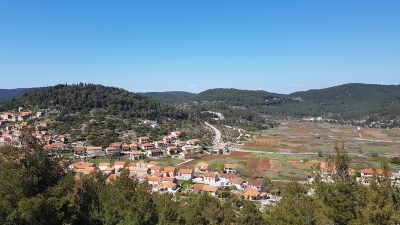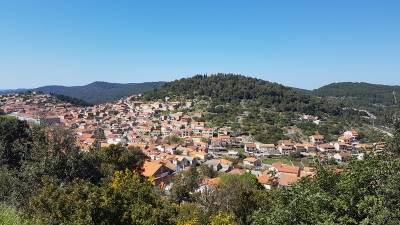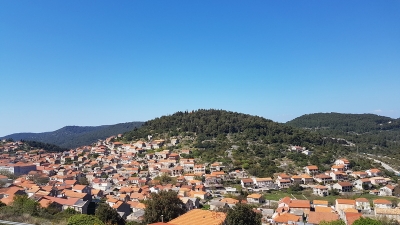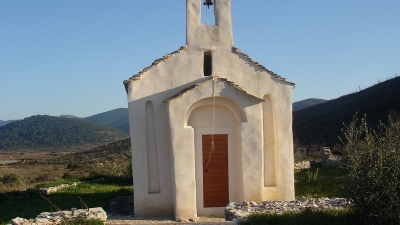BLATO
_360_240_s_c1.jpg)
Blato is situated in the interior of the island, in the middle of the western part, just 7 km from Vela Luka. It Is one of the oldest settlements on the island of Korcula. Around Blato dominate large cultivated fields, and in the surrounding mountains and hills there are olive groves and vineyards. The Blato field, after which the place got its name (Old Slavic mud-sized body of water), it was occasionally flooded and a lake was created of the fertile land. In 1912 tunnelling was completed from the Blato field to the bay Bristva with length over 2 km, which made a first agricultural reclamation of land in Dalmatia.
The population were history were oriented towards agriculture in the late 19th century and early 20th century. Blato exported 1,000 tons of wine and 30 tons of olive oil. The large expansion of Blato resulted that traders from Blato established Vela Luka as an export port for agricultural goods, and Blato in 1910 had a population of more than 7,000 inhabitants, and in the years after reaching the number of 9,000 inhabitants. After the First World War, when phylloxera disease attacked vineyards, Blato went through a major exodus of its inhabitants, when whole families immigrated to South America and Australia. The saddest day of this place was when in the Port Prigradica ship left with no return with over 1,200 people. Today in Blato has about 3,500 inhabitants and in Sydney lives three times more offspring of Blato origin.
The decoration of the main avenue in Blato with Linden trees in the length of one kilometre was planted in 1911 at the insistence of then-Mayor. In his travels through Europe he liked the tree-lined avenues bringing a touch of the big cities to Blato. It is interesting that as the width of the avenue with taken measurements of those two mules harnessed that can be freely passed by.
The gastronomic specialty of Blato is "lumblija" old fashioned cake that is prepared during the time of All Saints day, this tradition of over 200 years is only in Blato and Vela Luka. Cake accompanied unfulfilled love story between two young people, during the French occupation of the island, when the French baker with a recipe said to a young girl "N'oublie" - do not forget me. Lumblija is given to relatives, neighbours and friends, with the phrase ‘’don’t forget me a long time’’ and cake. In fact, this cake is durable and does not spoil. In Blato there are held in late October days Lumblija.
When you are in Blato not forget to visit the private collection of folk "Barilo" which exhibits show a lot about the life and history of man on the island. It is worth visiting the parish church of All Saints, with somewhat neglected building Dalmatian style. The church was first mentioned in the 14th century. And built by local craftsmen; stonemasons and, at that time widely known, Blato carpenters. Rich treasury collection belongs to the church of votive offerings, which, unfortunately, is not yet open to the public. Above the parish church is a restored shrine of Our Lady of Jesus Crucified Petkovic. She was born in the late 19th century. In a wealthy family, from the earliest days she had empathy for the poor and choose the way as a nun and joined the Sisters of Mercy and helped underprivileged children. Later she went to the mission to South America where he continued his work with poor children and orphans, and established the order of the Sisters of Mercy. 2003 was declared Blessed.



_400_225_s_c1.jpg)


_400_225_s_c1.jpg)

_400_225_s_c1.jpg)
_400_225_s_c1.jpg)
_400_225_s_c1.jpg)
_400_225_s_c1.jpg)
